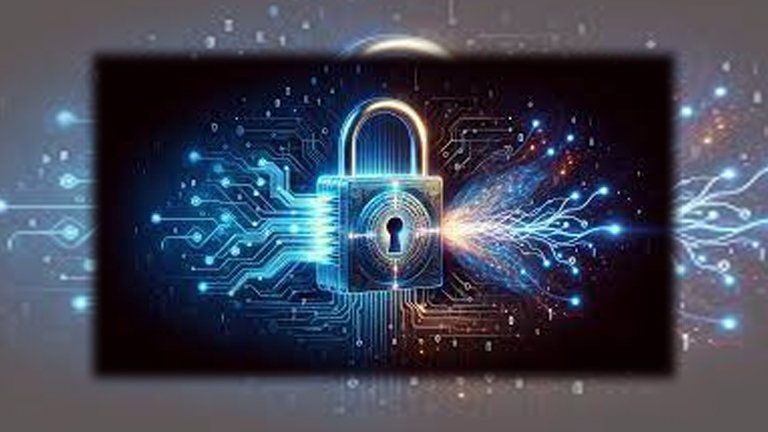Quantum Cryptography: The Future of Secure Communication
Quantum cryptography represents a groundbreaking leap in the field of secure communication. By leveraging the principles of quantum mechanics, it promises unprecedented levels of security that classical cryptographic methods cannot achieve. As cyber threats become more sophisticated, the need for robust and impenetrable encryption methods grows. Quantum cryptography, particularly through techniques like Quantum Key Distribution (QKD), offers a solution that is theoretically secure against any computational attack, even those by quantum computers.
Fundamentals of Cryptography
To understand the significance of quantum cryptography, it is essential to grasp the basics of classical cryptography and its limitations.
Classical Cryptography
Classical cryptography encompasses a range of techniques used to secure communication by transforming information into an unreadable format for anyone who does not possess the decryption key. Two primary types of classical cryptography are symmetric-key cryptography and asymmetric-key cryptography.
Symmetric-Key Cryptography
In symmetric-key cryptography, the same key is used for both encryption and decryption. This method is efficient and straightforward but has a significant drawback: the key must be securely shared between communicating parties. Examples of symmetric-key algorithms include the Advanced Encryption Standard (AES) and the Data Encryption Standard (DES).
Asymmetric-Key Cryptography
Asymmetric-key cryptography, also known as public-key cryptography, uses a pair of keys: a public key for encryption and a private key for decryption. This method solves the key distribution problem but is computationally more intensive. RSA (Rivest-Shamir-Adleman) and ECC (Elliptic Curve Cryptography) are prominent examples of asymmetric-key algorithms.
Limitations of Classical Cryptography
Classical cryptographic methods are secure based on the assumption that certain mathematical problems, such as factoring large numbers (for RSA) or computing discrete logarithms (for ECC), are computationally infeasible. However, advances in quantum computing threaten to break these assumptions. Shor’s algorithm, for example, can efficiently factor large numbers, rendering RSA and similar systems vulnerable.
Quantum Mechanics and Quantum Cryptography
Quantum cryptography harnesses the principles of quantum mechanics to secure communication. Key concepts in quantum mechanics, such as superposition, entanglement, and Heisenberg’s uncertainty principle, form the basis of quantum cryptographic protocols.
Superposition
Superposition allows quantum bits (qubits) to exist in multiple states simultaneously, unlike classical bits, which are either 0 or 1. This property is fundamental to the power of quantum computing and plays a role in certain quantum cryptographic protocols.
Entanglement
Entanglement is a phenomenon where the states of two or more particles become correlated in such a way that the state of one particle instantly influences the state of the other, regardless of the distance between them. This property is used in quantum key distribution and other quantum communication protocols.
Heisenberg’s Uncertainty Principle
The uncertainty principle states that certain pairs of physical properties, such as position and momentum, cannot be simultaneously measured with arbitrary precision. In the context of quantum cryptography, this principle ensures that any attempt to measure a quantum state in transit will disturb the state, revealing the presence of an eavesdropper.
Quantum Key Distribution (QKD)
Quantum Key Distribution (QKD) is the most well-known application of quantum cryptography. It enables two parties to generate a shared, secret key that can be used for secure communication.
BB84 Protocol
The BB84 protocol, proposed by Charles Bennett and Gilles Brassard in 1984, is the first and most widely implemented QKD protocol. It uses the polarization states of photons to encode bits of information. Here’s a step-by-step overview of the BB84 protocol:
- Photon Transmission: Alice sends a series of photons to Bob, each polarized in one of four possible states: horizontal, vertical, +45°, or -45°.
- Random Basis Choice: Bob randomly chooses a basis (either rectilinear or diagonal) to measure each photon.
- Public Discussion: Alice and Bob publicly share the bases they used for each photon but not the measurement results.
- Key Sifting: They discard the bits where their bases do not match. The remaining bits form the raw key.
- Error Correction and Privacy Amplification: Alice and Bob perform error correction to rectify any discrepancies in the raw key due to noise or potential eavesdropping. They then apply privacy amplification to reduce any partial information an eavesdropper might have gained, resulting in a shorter, but highly secure, shared secret key.
E91 Protocol
The E91 protocol, proposed by Artur Ekert in 1991, uses entangled photon pairs for key distribution. Here’s an overview:
- Entanglement Distribution: A source produces entangled photon pairs and sends one photon to Alice and the other to Bob.
- Measurement: Both Alice and Bob randomly choose one of several bases to measure their photons.
- Public Discussion and Correlation: Alice and Bob publicly share their measurement bases and keep only the results where their bases matched.
- Key Extraction: Due to the entanglement, their measurement results will be highly correlated, forming the raw key. They then proceed with error correction and privacy amplification as in BB84.
Security of Quantum Key Distribution
QKD offers provable security based on the laws of quantum mechanics. Any attempt by an eavesdropper to intercept the key will disturb the quantum states, introducing detectable errors. This fundamental property makes QKD theoretically immune to both classical and quantum computational attacks.
Eavesdropping Detection
In QKD, eavesdropping can be detected through the introduction of errors. When Alice and Bob compare a subset of their key bits, they can estimate the error rate. A high error rate indicates the presence of an eavesdropper (Eve), allowing Alice and Bob to discard the compromised key and attempt a new exchange.
Practical Implementations and Challenges
While QKD offers theoretical security, practical implementations face challenges such as photon loss, detector efficiency, and noise in the transmission channel. Advances in technology and engineering are continually improving the robustness and practicality of QKD systems.
Quantum Cryptography Beyond QKD
Quantum cryptography encompasses more than just QKD. Other protocols and applications leverage quantum principles to achieve various cryptographic goals.
Quantum Coin Tossing
Quantum coin tossing is a protocol that allows two parties to generate a random bit (heads or tails) with fairness guaranteed by quantum mechanics. It can be used in situations where mutual distrust exists, such as secure multiparty computations and decision-making processes.
Protocol Overview
- Preparation: Alice and Bob each prepare a set of quantum states.
- Exchange: They exchange their quantum states and measure them.
- Verification: Both parties publicly verify the outcomes to ensure fairness.
- Result Determination: Based on the measurement outcomes, they determine the result of the coin toss.
Quantum coin-tossing protocols are designed to prevent either party from biasing the result, ensuring a fair and random outcome.
Quantum Secure Direct Communication (QSDC)
QSDC is a protocol that allows the direct transmission of secure messages without the need for a pre-shared key. It leverages the properties of entanglement and quantum measurement to ensure security.
Protocol Overview
- Entanglement Distribution: A source distributes entangled photon pairs to Alice and Bob.
- Message Encoding: Alice encodes her message onto the entangled states.
- Transmission and Measurement: Alice sends the encoded photons to Bob, who measures them using a specific basis.
- Message Retrieval: Bob retrieves the message based on his measurement results and the shared entangled states.
QSDC ensures that any eavesdropping attempt will disturb the quantum states, allowing Alice and Bob to detect the presence of an eavesdropper.
Quantum Cryptography in the Era of Quantum Computing
The advent of quantum computing poses a significant threat to classical cryptographic systems. Quantum cryptography, with its foundations in quantum mechanics, offers a path to future-proof security solutions.
Shor’s Algorithm and RSA
Shor’s algorithm, developed by Peter Shor in 1994, can efficiently factor large numbers, breaking the security of RSA encryption. As quantum computers become more powerful, the need for quantum-resistant cryptographic methods becomes critical.
Post-Quantum Cryptography
Post-quantum cryptography aims to develop classical cryptographic algorithms that are secure against quantum attacks. These algorithms, based on hard mathematical problems like lattice-based cryptography and hash-based cryptography, provide an additional layer of security in a post-quantum world.
Implementations and Practical Applications
The practical implementation of quantum cryptography involves both hardware and software components. Recent advancements have made QKD systems more accessible and feasible for real-world applications.
Quantum Cryptography Devices
Quantum cryptography devices, such as QKD modules, are designed to be integrated into existing communication infrastructure. These devices include photon sources, detectors, and optical fibers for transmitting quantum states.
Quantum Cryptography Networks
Quantum cryptography networks are being developed to enable secure communication over long distances. These networks use quantum repeaters and trusted nodes to extend the range of QKD, allowing for secure communication across cities and potentially even globally.
Notable Implementations
- SECOQC (Secure Communication Based on Quantum Cryptography): A European project that demonstrated a QKD network in Vienna.
- China’s Quantum Communication Network: China has developed extensive quantum communication networks, including the Beijing-Shanghai quantum secure communication backbone and the Micius satellite, which facilitates long-distance QKD.
Future Directions and Research
The field of quantum cryptography is rapidly evolving, with ongoing research focused on overcoming current limitations and exploring new applications.
Enhancing QKD Performance
Researchers are working on improving the performance of QKD systems, including increasing key generation rates, enhancing photon detection efficiency, and developing robust error correction methods.
Quantum Cryptography in Space
The use of satellites for quantum cryptography, as demonstrated by China’s Micius satellite, opens up possibilities for global quantum communication. Future research aims to enhance the reliability and reach of space-based QKD systems.
Integrating Quantum Cryptography with Classical Systems
To achieve widespread adoption, quantum cryptography must be seamlessly integrated with existing classical communication systems. This involves developing hybrid protocols and interfaces that allow for smooth interaction between quantum and classical components.
Ethical and Societal Implications
As quantum cryptography becomes more prevalent, it is essential to consider its ethical and societal implications. The technology promises to enhance security and privacy but also raises questions about access, regulation, and potential misuse.
Privacy and Security
Quantum cryptography can significantly enhance privacy and security for individuals, businesses, and governments. It ensures that sensitive information remains confidential and protected from cyber threats.
Accessibility and Equality
Ensuring that the benefits of quantum cryptography are accessible to all is crucial. Efforts should be made to prevent a technological divide where only certain entities can afford and implement quantum security measures.
Regulation and Standards
Developing international standards and regulations for quantum cryptography is necessary to ensure interoperability, security, and trust. Collaboration between governments, academia, and industry will be essential in establishing these frameworks.
Quantum cryptography represents a paradigm shift in secure communication, offering unprecedented levels of security based on the fundamental principles of quantum mechanics. From Quantum Key Distribution to emerging applications like quantum secure direct communication and quantum coin tossing, the field is poised to revolutionize how we protect sensitive information. As quantum computing advances, the importance of quantum cryptography will only grow, providing a robust defense against future cyber threats. While challenges remain, ongoing research and technological advancements are steadily bringing the promise of quantum cryptography closer to reality, heralding a new era of secure communication in the quantum age.


